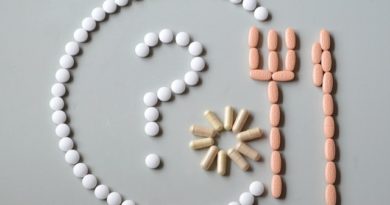Stem cells offer a more natural approach to plastic surgery
The potential of stem cells is everywhere in medicine – from growing new tissue that could go on to provide replacement organs, repairing damage from disease or injury and in reconstructive surgery.
And a team of Danish researchers recently suggested in The Lancet that stem-cell enriched fat grafts had the power to transform reconstructive surgery, including procedures such as breast surgery. Not only can they improve the survival of grafts, but also success of a more natural approach to reconstruction.
Stem cells are a class of undifferentiated cells that are able to become (differentiate into) specialised cell types, and they repair and replace cells in tissues. They have three vital characteristics: they are long-lived, they are self-renewing (we can make more of them) and can differentiate into more mature, specialised cells. Adult stem cells, also known as somatic stem cells, are found throughout the body and can multiply to regenerate damaged tissue or replace dying cells. They can be derived from many sources, including from fatty (adipose) tissue.
Stem cells have the potential to revolutionise plastic and reconstructive surgery, a speciality which focuses on restoring form and function. And introducing them to techniques in this field, such as fat grafting (otherwise known as lipofilling, where a patient’s own fat is harvested to increase its volume elsewhere in the body) could improve the outcome of the procedure and its longevity.
But one of its drawbacks is the variation in how quickly the fat graft is reabsorbed by the body. Some studies have suggested a gap as wide as 20-80%. The Danish researchers in the Lancet suggest that by enriching these fat grafts with fat-derived stem cells, the amount of graft that survives absorption by the body is substantially improved.Lipofilling is commonly performed in plastic surgery to replace lost volume. The procedure is used to improve breast symmetry following breast reconstruction surgery, augmentation and for congenital breast deformities without using breast implants.
While this has been shown in animal studies, the result in humans is a significant step forward for reconstructive medicine. It adds greatly to the prospect of stem cell use in clinical practice especially in breast reconstruction where large volumes of lipofilling are required.
It has the potential to significantly reduce the number of operative procedures a patient may require. It is also a step forward in other procedures where lipofilling is used such as filling in scars and traumatic defects.
Nerve and burn injuries
Stem cells are also being used tissue engineering and other areas of reconstructive medicine. For example, in patients with traumatic nerve injuries, artificial conduits are being used to guide new regrowth and have emerged as an alternative to nerve grafts taken from elsewhere in the body. Fat-derived stem cells have also been incorporated into these nerve conduits in recent experimental studies so that they differentiate into Schwann cells, which play and important role in conducting nerve impulses, to promote nerve regeneration.
There is a potential for the use of epidermal stem cells in burns. The stem cells can be sprayed on directly or transferred onto a scaffold of skin substitute or graft. This has been shown to improve wound healing. In the same way, these stem cells have also been used to heal chronic wounds such as ulcers either as epidermal stem cells sprayed directly on to the wound or through fat-derived stem cells injected into the wound.
Cosmetic procedures
Cosmetic procedures and in particular facial rejuvenation has become an integral part of aesthetic plastic surgery. Many people are now opting to counter volume loss and wrinkles as they age. Synthetic fillers are used for this but they have significant limitations. One of the fundamental principles of plastic surgery is replacing like with like and using fat grafts from a patient’s own body is preferable. But the unpredictability of retention means that many still opt for a synthetic substance.
One must be aware, however, that studies show that stem cells do retain memory of their donor site. This has implications for cosmetically sensitive areas such as the area surrounding the eye should the patient gain weight. So if fat-derived stem cells were taken from the hip, for example, if the patient put on weight they might put on more where the graft is.
Claims are also being made that these cell therapies improve skin quality and tightening. While this would be a boon for the beauty and cosmetics industry, there’s no concrete evidence for this.
![]() There is no doubt that this is an important and exciting field. Stem cells look to become the corner stone of regenerative medicine. And in reconstructive surgery there is yet more to come.
There is no doubt that this is an important and exciting field. Stem cells look to become the corner stone of regenerative medicine. And in reconstructive surgery there is yet more to come.
Ash Mosahebi, Honorary Senior Lecturer, UCL
This article was originally published on The Conversation. Read the original article.



